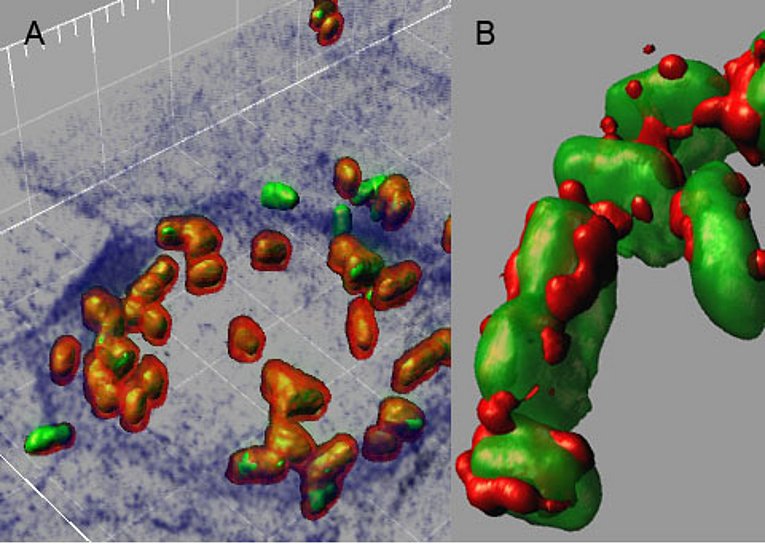Research group of Dr. R. Gerlach
Pathogenicity of Salmonella and microbiome analyses
Modulation of Salmonella virulence by host signals
Salmonellosis is one of the most common bacterial infectious diseases worldwide and in Germany. Our group investigates molecular mechanisms underlying the pathogenicity of Salmonella enterica. In particular, bacterial secretion systems are in focus. Secretion systems play a crucial role in pathogenicity, as Salmonella uses these structures and their substrates to interact with host cells and other bacteria. Furthermore, we investigate the influence of host-specific environmental factors on the regulation and function of Salmonella virulence factors. Environmental signals, such as decreased oxygen, play a crucial role in host cell recognition as well as successful adaptation of bacteria to different habitats within the host.
Microbiome analyses
For successful colonization, Salmonella and other pathogens must also overcome the barrier function established by the host microbiota. Therefore, another focus of our group is the analysis of the microbiota composition of humans and using animal models in health and disease. For cooperation partners from applied clinical and basic research we provide amplicon-based (16S rDNA) analysis of microbial community structures using an Illumina MiSeq system and state-of-the-art bioinformatics tools.
.

Current projects:
Functional characterization of the Salmonella Pathogenicity Island 4-encoded Type 1 Secretion System
A so-called Type 1 secretion system (T1SS) is encoded by Salmonella Pathogenicity Island 4 (SPI-4) which was identified as an important factor in the colonisation of cattle but is also expressed by bacteria in the blood of sepsis patients. The substrate of the T1SS is SiiE, a giant repetitive adhesin which can mediate the binding of bacteria specifically to polarised epithelial cells. The way in which this system functions is unique: SiiE is not permanently bound to the bacteria surface but is mainly to be found in the surrounding medium. Only upon a specific signal, the protein can be detected on the surface of the bacteria.
Modulation of Salmonella virulence through antimicrobial peptides
Sublethal concentrations of antimicrobial peptides (AMPs) can serve as a signal leading to resistance development and even triggering of virulence functions. We are interested in the impact of members of the bactericidal permeability-increasing protein-fold family (BPIF) of AMPs on virulence of Salmonella and other Enterobacteriaceae.
Impact of hypoxia on Salmonella pathogenicity
Low oxygen concentration (hypoxia) is one of the key environmental signals to which enteric pathogens are exposed to in vivo. We were able to show that under low oxygen conditions Salmonella can replicate much better within macrophages as a result of an increased virulence of the bacteria in combination with a decrease in antimicrobial activity of the macrophages.
Characterization of niche-specific oral microbiomes
In cooperation with the Department of Orthodontics and Orofacial Orthopedics, Universitätsklinikum Erlangen, we analyze the bacterial communities in different spatial niches of the oral cavity. These analyses will broaden our knowledge about the maturation of the oral microbiota in early life and the impact of other factors such as orthodontic treatment, periodontitis or orofacial clefts on the microbiota in different oral niches.



